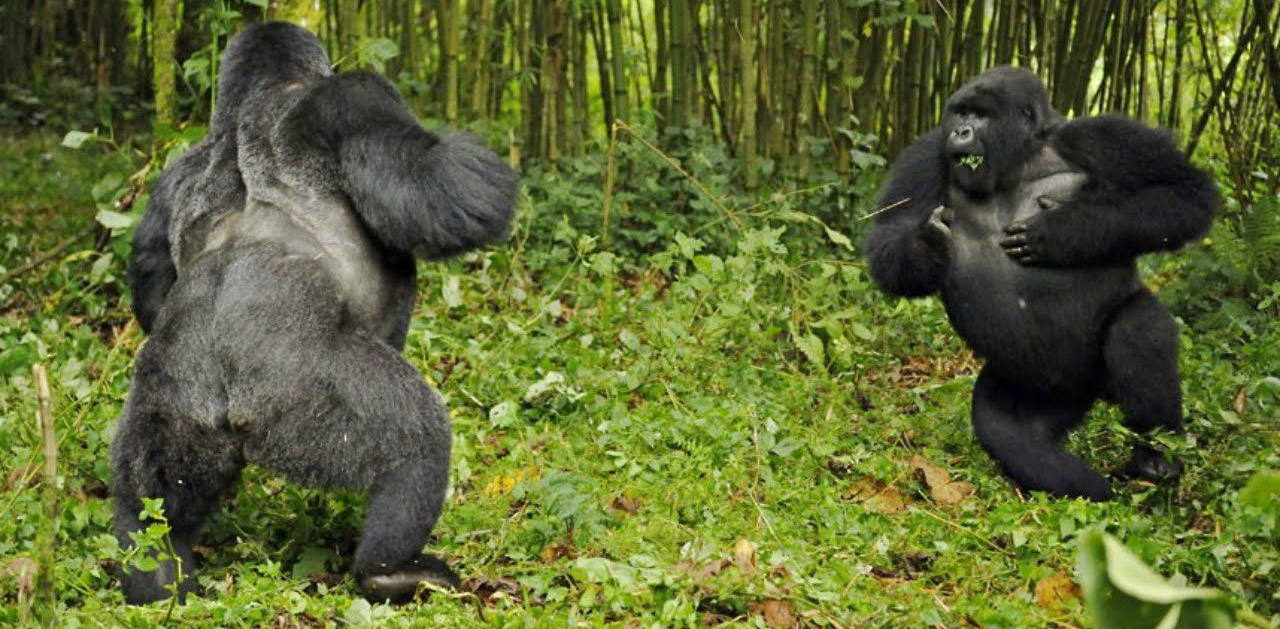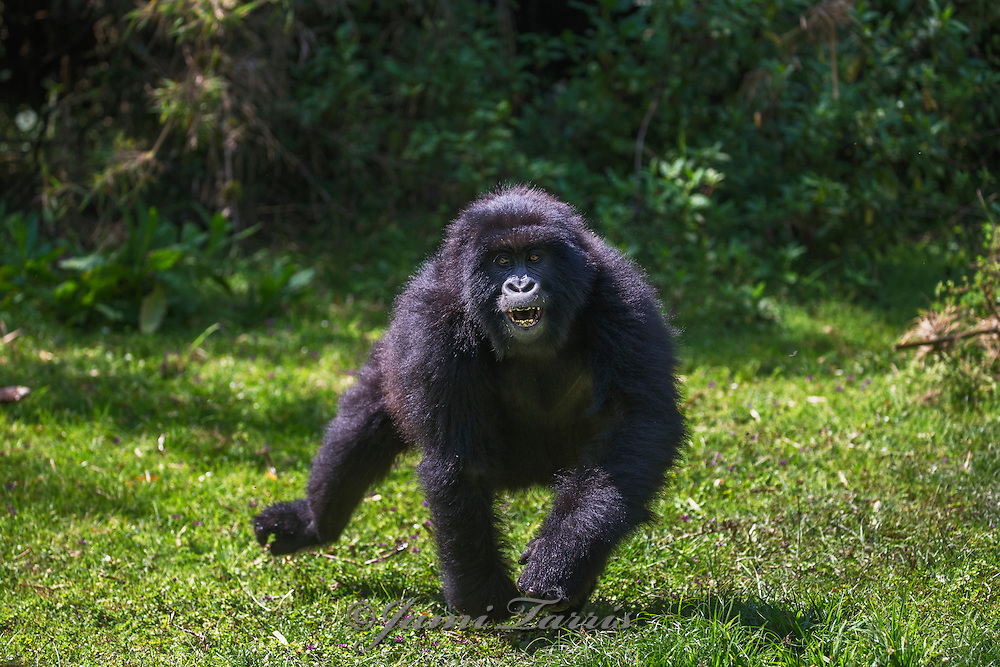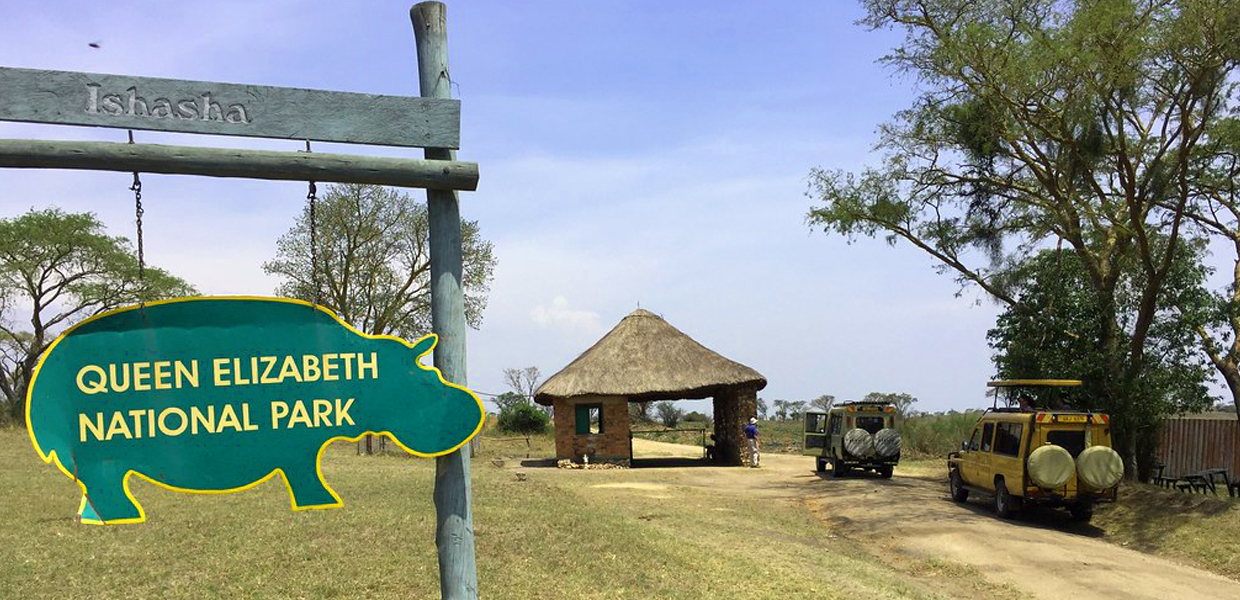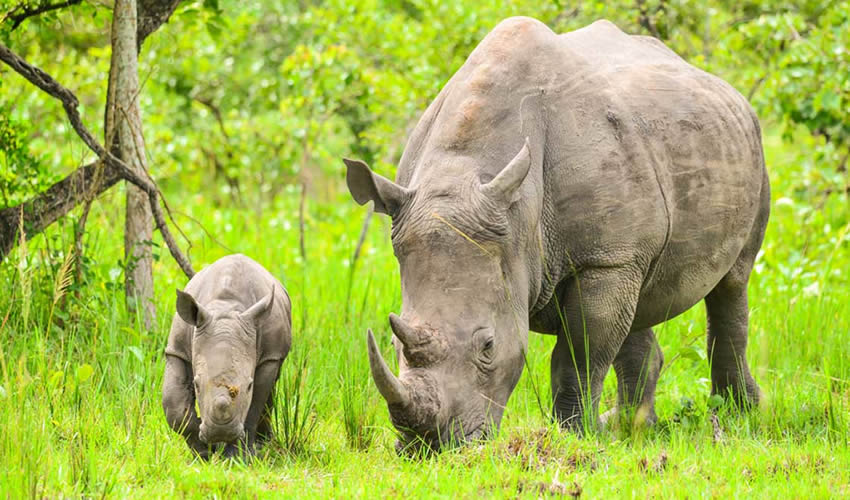
Are the gorillas endangered?
Are the gorillas endangered?
Are the gorillas endangered? Mountain gorillas are one of the types of animals that are in danger of going extinct. This means that there is a chance that they will go extinct soon. Even though the number of mountain gorillas has grown over the last 20 years, the International Union for Conservation of Nature (IUCN) still considers them to be an endangered species. This is because the danger to gorillas is unpredictable and could get worse very quickly in a short time.
Mountain gorillas only live in three African countries: Rwanda, Uganda, and the Democratic Republic of the Congo (DRC). Some African countries have a lot to show off, but these countries have these unique great apes that will round out your tour experience in Africa.
Mountain gorillas are severely endangered because of a variety of factors. If you want to see them before they go extinct, you should visit these countries soon.

In addition the mountain gorillas, among the sub species, the cross river gorillas have the smallest population of about 250 individuals left in the entire world making the greatly vulnerable to extinction. Between 1996 and 2016, there was a 77% drop in the number of Eastern lowland gorillas. Less than 3,800 Eastern lowland gorillas are thought to be left in the world. In the early 1920s, there were less than 1,000 mountain gorillas left in the world. They were on the list of highly endangered species made by the International Union for Conservation of Nature (IUCN).
The mountain gorillas can only be visited in the following safari destinations in the entire world and this is in the Albertine rift which covers the Volcanoes national park of Rwanda, Mgahinga gorilla national park of Uganda and the Virunga national park of the Democratic Republic of Congo and the other place is the Bwindi impenetrable forest national park of Uganda. Over the years, the mountain gorillas have been in danger of going extinct, but people are working hard every day to protect them in the wild, and their numbers are growing every day.
The following are the reasons to why the mountain gorillas are endangered;
Habitat loss.
Mountain gorillas have lost their homes because of the need for commercial activities like farming, mining, and agriculture. Mountain gorillas eat plants and sleep in nests they make in trees. Many gorillas have lost their homes and food because trees have been cut down for business purposes.
Weak conservation policies.
The mountain gorillas can fully succeed in the wild habitat and this subjected them to the vengeful people who killed them. The mountain gorilla home authorities and the other stake holders were abit lax about conservation of these mountain gorillas which left them unprotected. Humans are the greatest threat to the mountain gorillas and yet their best friends as their effort determines the thriving or demise of this species.
Stakeholders have come around to the idea of protecting mountain gorillas now that they know how important it is. This is clear from the fact that the number of mountain gorillas has gone up. The national parks have put in place a number of policies to protect wildlife, such as limited the number of people who can visit each family of mountain gorillas and giving poachers harsh punishments. They also require staff to patrol and check on the forests.
Construction of roads.
Making roads in densely populated forests has led to deforestation, which is bad for gorillas because it makes it easier for poachers to get to the mountain gorillas. Before, they had to clear the thick bushes on their own, which was hard and tiring work.
Poaching.
Some locals hunt gorillas because they want to eat game meat and make more money. Poaching is the biggest danger to gorilla families that aren’t habituated and aren’t protected. Only about 20% of mountain gorillas are habituated, leaving the other 80% open to poachers.
Exotic pets.
Some people catch gorillas and keep them living so they can sell them to people from other countries who want to buy them as pets. It’s also a shame that most gorillas get caught in traps set for other animals, which can cause them to get hurt badly or even kill them.
Conflicts.
The political situation of a country can put gorillas in danger. For example, Congo has a lot of unstable political wars. Most gorillas are threatened during these wars because they can be killed by accident or because people flood their habitats, leaving them with nowhere safe to live.
Diseases.
Gorillas get sick just like people do, many mountain gorillas died from the Ebola virus in 2003. Gorillas can get infected with some diseases from humans so the more habitat loss the more they come to close contact with humans hence higher risks of contradicting diseases.
Before the late American primatologist Dian Fossey did her good work, gorillas were going extinct all over the world. Thank God for her good work or else mountain gorillas.
Habitat Loss and Fragmentation.
Loss of space is a big problem for all great apes, including gorillas, but the problem is different in different places. Oil-palm plantations and industrial-scale mining, for example, are becoming a problem for western lowland gorillas because they take away their habitat and make it easier for more development, which can further break up the forest and separate gorilla groups.
Many Cross River and eastern gorillas are losing their homes because people are moving in. This is usually caused by illegal logging or the growth of towns, farms, and pastures, which takes away forest. Cross River gorillas lost 59% of their area just between 1995 and 2010.
Conservation of Mountain Gorillas.
Now, let’s look at what is being done to make sure that these gorillas, which are in danger of going extinct, can still live on earth.
Extensive Research and Monitoring.
Not only does scientific study help us learn more about gorillas, but it also helps us help them and protect them better. The study that people like Dian Fossey and Tom Butynski began in the 1970s and 1980s has helped us learn more, and the fact that the number of gorillas is growing is a sign of the success. When funding for long-term research goes down, some tasks have to stop or be scaled back. The average person can help keep mountain gorillas from going extinct by giving money to study projects like these. Check out the Institute of Tropical Forest Conservation (ITFC), which is based in Bwindi’s Ruhija, and the work they do on their website.
Community Tourism Programs.
Communities have been working to protect and save gorillas in order to stop both fights with wildlife and poaching. Some of the money from gorilla trekking is used by these programs to help the local people directly. This has made people want to help save the environment in important ways. In Uganda, these kinds of programs work very well. Rwanda is doing pretty well, but Congo is just getting started. This is because political unrest is taking attention away from Congo.
Human-wildlife Buffers.
To stop gorillas from leaving protected national parks and destroying people’s farms, vegetation buffers are put in place. This makes it less likely that gorillas will leave the parks. This is done a lot in Bwindi and Mgahinga National Parks in Uganda. Most of the time, trees or bushes that are not interesting to mountain gorillas are in the buffer zone. These trees are not good to eat, so the gorillas have no interest in them. Since gorillas do not eat tea, and it grows very well in the mountainous volcanic soils, some buffers are made with tea plantations. This makes money for the people who own the plantations and helps protect the environment.
Gorilla Tourism.
A part of the money from gorilla trekking goes to developing the countries as a whole, not just the people that live near gorilla habitats. These funds help keep the government stable, improve education, health, and infrastructure, among other things. This is where we also make a difference. We know that the money from gorilla trekking safaris goes back into the local communities and the country as a whole. With our gorilla trekking safaris in both Rwanda, Congo and Uganda, we can help the gorillas and, of course, the governments of all countries. If you really want to see gorillas in their natural environment, we’d like to help you plan a trip like that. Feel free to look at the plans on our page about gorilla trekking safaris to get ideas.







